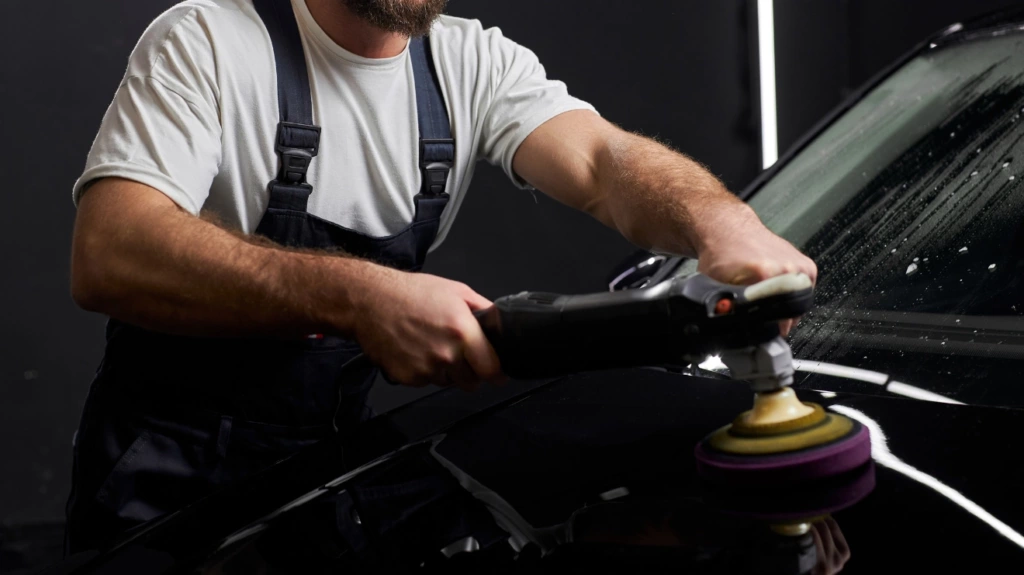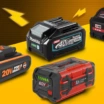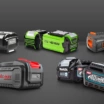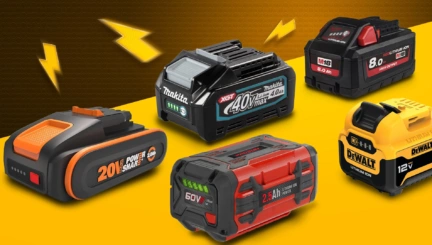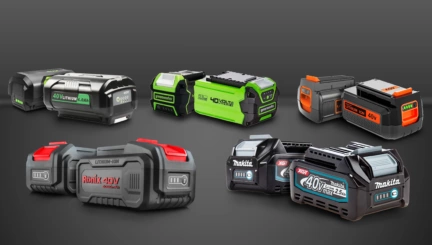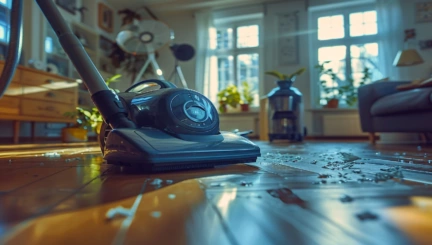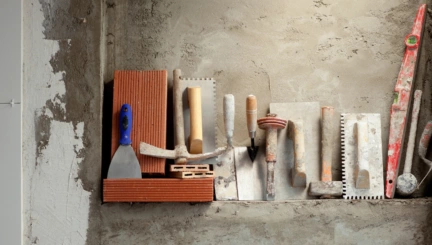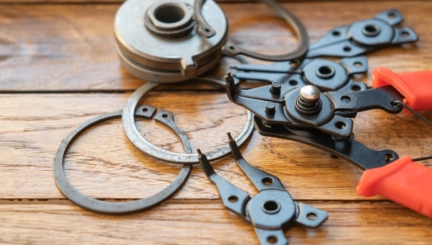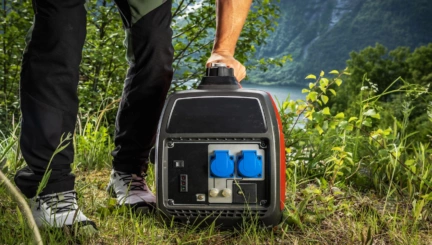- 9min
- 3558
- 0
Remember the shine your car had when it was new? Get your shine back with the Best Car Buffer at hand. But how do they work? Or more basically what are they? These tools are made to remove oxidized layers, stubborn contaminants, and deep scratches. They are usually mistaken for polishers. But, there are several differences that you should notice to understand buffers better.
In general, they are different in the level of abrasion. Polishers use smooth abrasive materials to prepare a shiny surface, while buffers use more aggressive attachments. So, whenever you see a car detailing power tool, make sure you are choosing what you need.
Take your business to the next level with a dependable Polisher Supplier
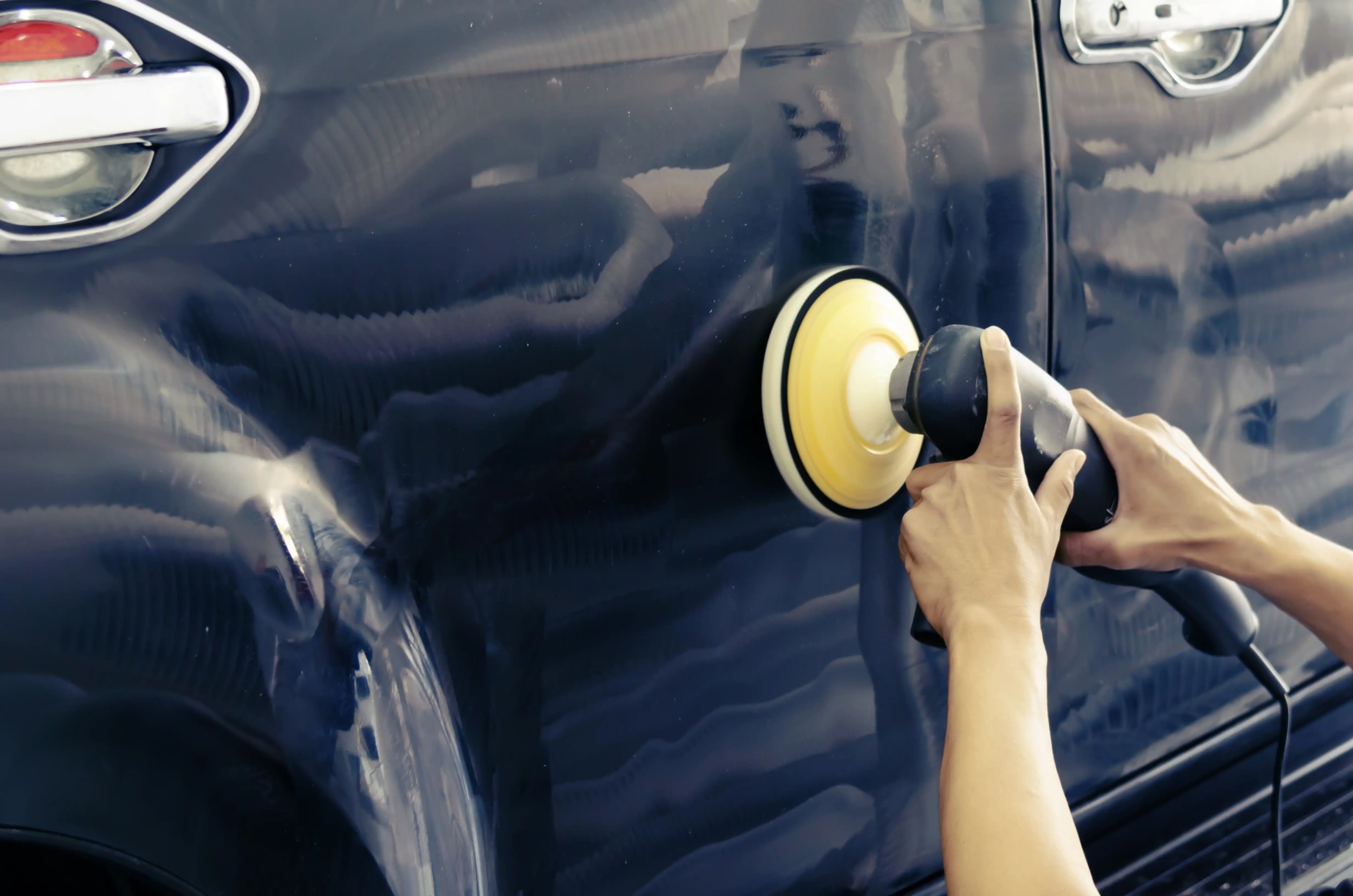
Best Car Buffer Buying Guide
If you’re reading this article, you’re likely someone who isn’t content with anything less than the ideal. So, if you are seeking wise criteria for your choice to find the best car buffers 2024, follow me here. First, look at the table below, then read the main factors.
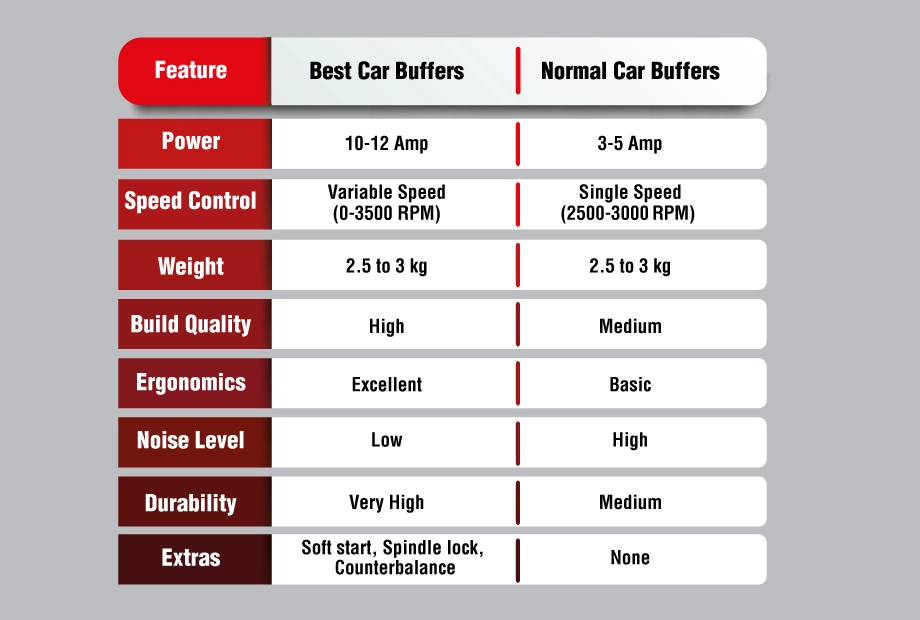
What to Consider When Buying a Car Buffer?
Your answer lies in four main characteristics that you should inspect before paying a penny. Carefully consider each aspect to gain a complete understanding of what you truly need. The first thing to understand is the various versions and types of buffers available.
Buffer Type
We can put them in three categories based on their motion type and applications. So, if you want to choose the best car buffer for your task, first consider your skills and then choose the one that fits you.
- Rotary Buffers
My first recommendation for you is to buy this type if only you are a professional and trained enough. Because they can damage the surface if you don’t know how to work with it.
They perform a high cutting speed and are ideal for surfaces that are highly in need of a deep abrasion. In a ranking, the rotary ones are placed at the top in terms of speed and power.
- Dual-Action (DA) Buffers
As the name suggests, it performs two motions to remove defects off the surfaces: oscillation and rotation. This makes it more flexible and user-friendly. So, if you are not a Rotary Buffer-person, a dual-action one can be your top car buffer!
They provide a balanced cutting power that reduces the risk of swirl marks and damages. That’s why pros and beginners can use them for different tasks.
- Random Orbital Buffers
Random orbital buffers combine orbital and rotary motions. Their operation is partly the same as the former one, but less versatile than the dual-action ones but brings more safety, particularly for beginners.
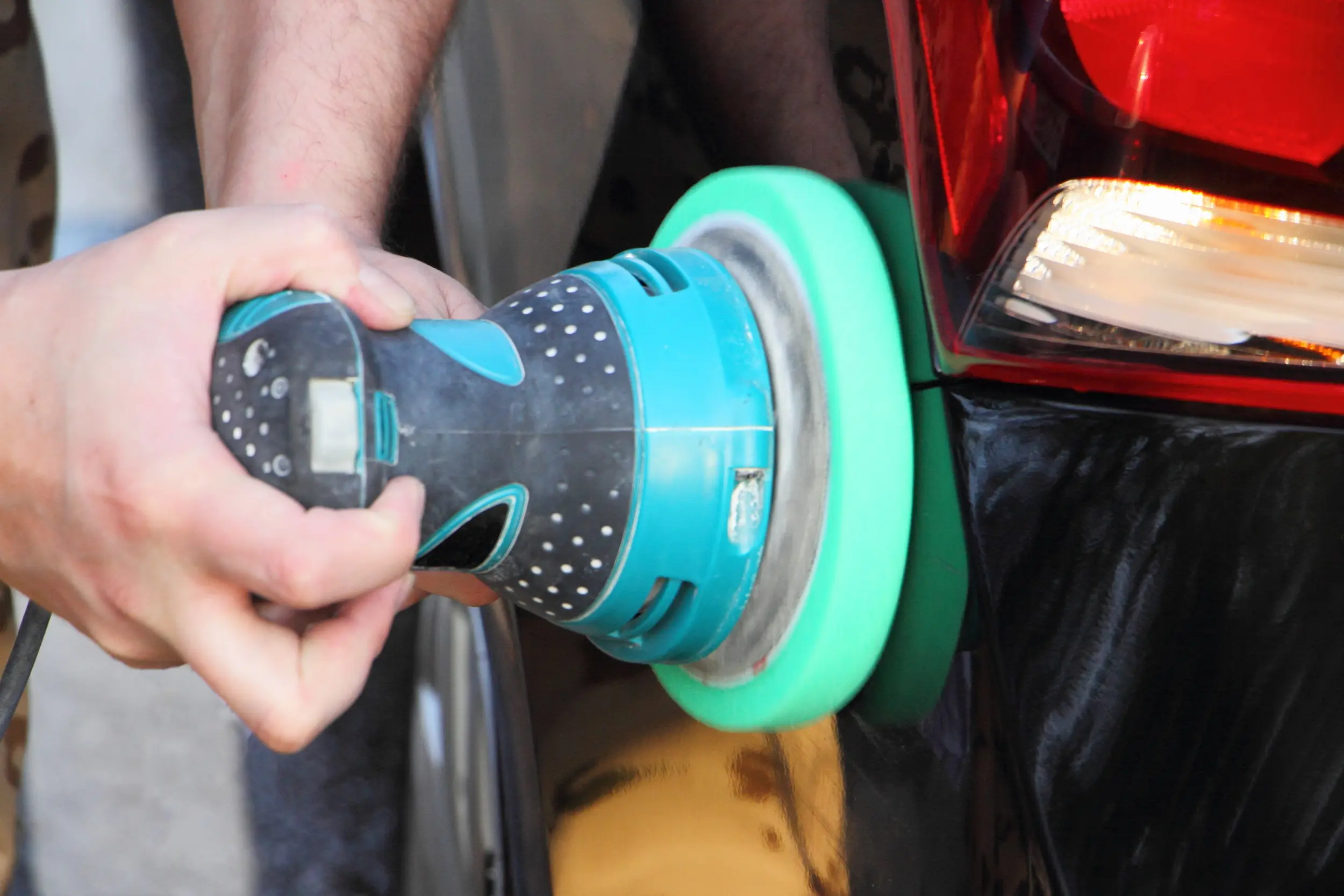
Choosing the Right Pad
There are different types of pads that you can use for buffers: cutting pads, polishing pads, finishing pads, and microfiber pads. To know how to choose the right one, you need to consider some points.
See what your vehicle’s paint condition is and what abrasion level you need. For example, if there are scratches, oxidation, and swirl marks on the surface, a cutting pad would be a good choice, or for moderate and minor defects, you require finishing pads.
After choosing the proper type, you must check if the pad size is compatible with your tool. Consider starting with a test spot to inspect if it works effectively.
Power Source
The power source is a factor that you should take care of when seeking the highest-rated car buffer. It is a good indicator to know where and how you canuse them.
If you want a portable buffer that can be used outdoors, a cordless buffer is a good option for you because it does not need urban power. And naturally, if you have to work indoors, you have two other choices as well: pneumatics and the corded ones. Pneumatic buffers are ideal for heavy-duty tasks, while corded buffers are suitable for lighter indoor jobs.
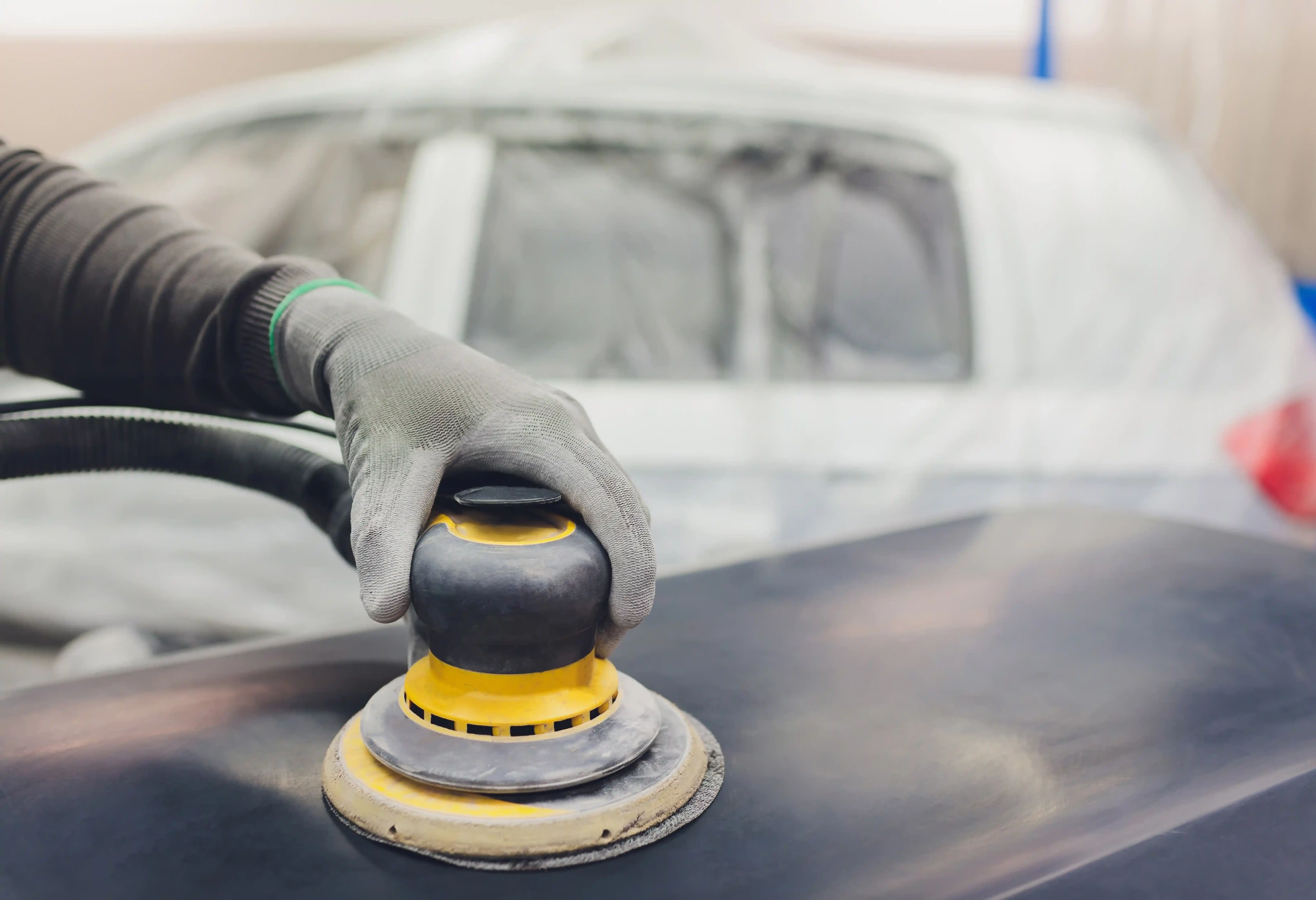
Car Design
Car housing can be different. Some are curvier and some flat. For each, a specific type would be the best and most popular car buffer.
- Curvy and Aerodynamic Designs
A dual-action buffer is generally better as it is easier to control and less likely to cause damage on contoured surfaces.
- Flat and Broad Surfaces
Rotary buffers can be more efficient, but they require more skill to avoid creating swirls or burns in the paint.
By matching the buffer type to your car’s design and specific needs, you can achieve optimal results while minimizing the risk of damaging your vehicle’s paint.
Best Car Buffer Brands
- Makita
Pros
Makita car buffers are made for heavy use, so are durable, have powerful motors, and are suitable for different applications.
Cons
They are heavier than those of other brands, so, can cause fatigue during long-term use. The other drawback can be the expensive price that makes it inaccessible for many.
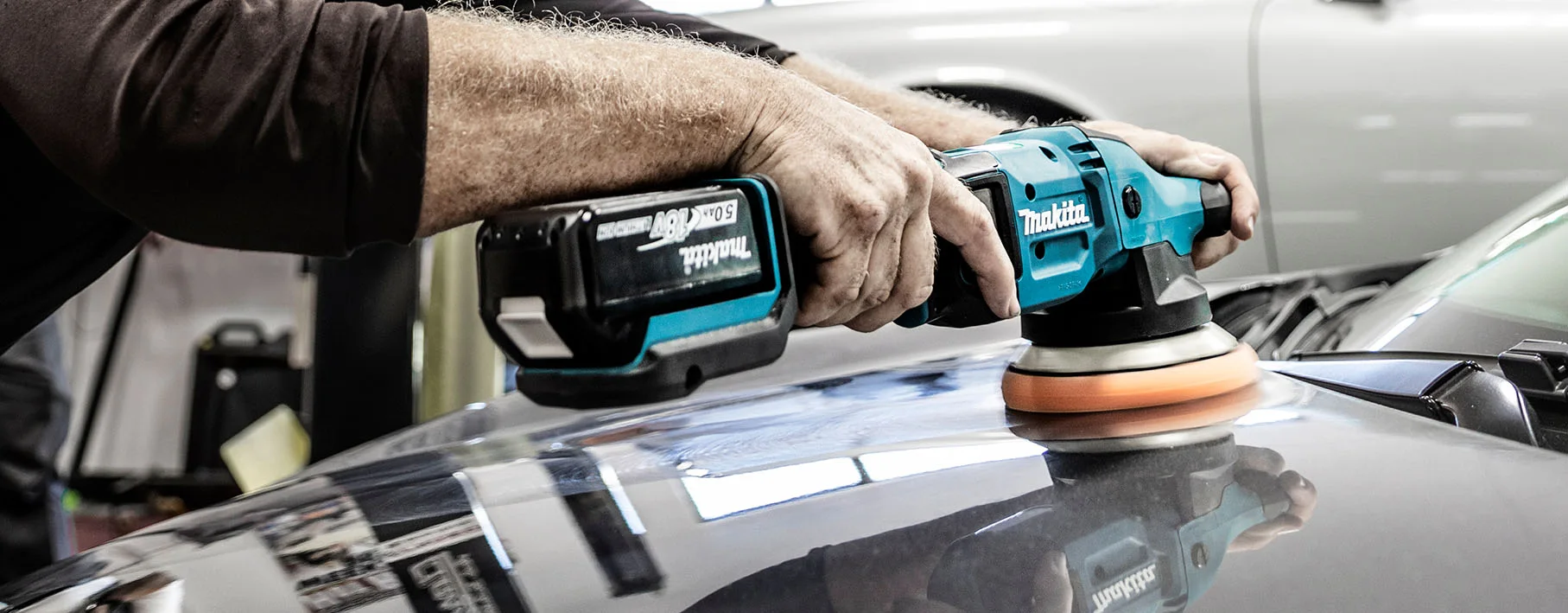
- DeWalt
Pros
DeWalt buffers deliver high torques, ranging from 5 Nm to 15 Nm, and a motor power of 10-15 Amp, which means a strong tool for professionals.
Cons
The DeWalt buffers are of high price points and can be heavier than other brands. So, if you want to use a buffer for a long time use or if you are a beginner, DeWalt won’t be your first choice.
- Meguiar’s
Pros
Meguiar’s are designed for both amateurs and professionals: they are simple, intuitive, and ergonomic. Then, if you buy a buffer of this brand, you can get a wide range of pads, and compounds, that make them more versatile. On the other side, they have a great reputation in the automotive industry.
Cons
They are not as powerful as DeWalt and Makita, and cannot hold up well under extremely heavy use, so even though they can be used by professionals as well, they cannot be the best car buffers for them.
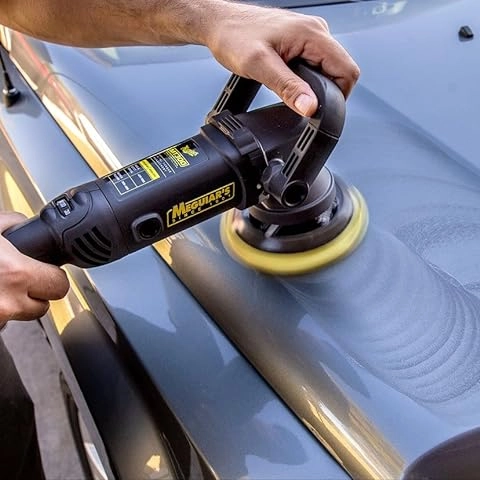
- Porter-Cable
Pros
Many Porter-Cable models feature a dual-action (random orbital) mechanism. That’s why with them you should not be worried about paint damage. Their variable speed control, on the other side, allows performing a wide variety of applications.
One other benefit they bring is their pricing. They offer good value for money and are accessible to many DIYers and hobbyists.
Cons
They vibrate and make noise more than many other models. While their powers are less and their cord length is shorter than ideal.
- Griot’s Garage
Pros
They are known for being safe on all surface types and minimizing the risk of damage. They are also known for their ability to deliver effective swirl removal and effective paint correction. But what sets them apart, is their highly supportive customer service.
Cons
You may need some practice to work with it. So, it may not be a good option if you are not professional. Their size and weight might also burden you while working on larger vehicles or hard-to-reach spaces.
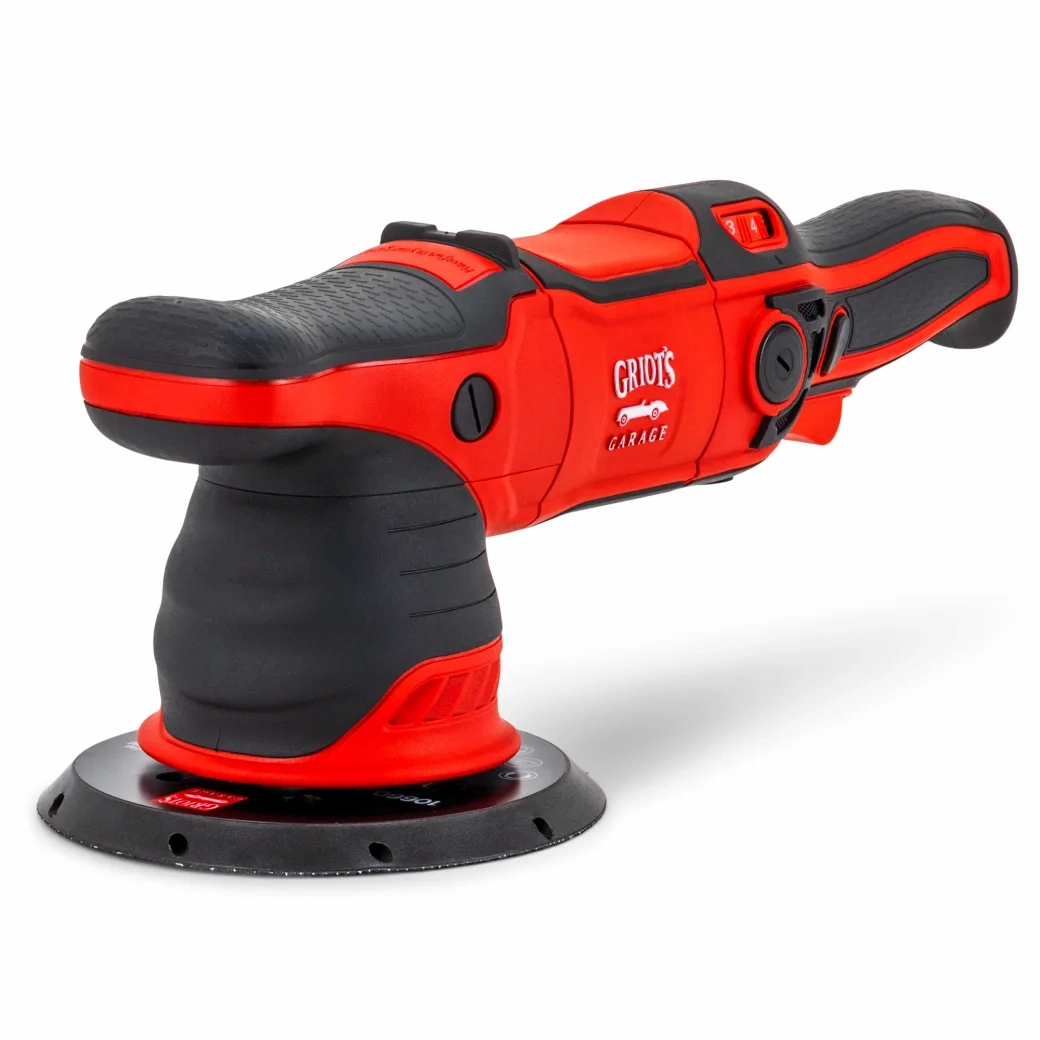
How to Inspect If the Buffer Performs Well
I talked about the features of the highest-rated car buffers and the brands thatoffer the best versions. Now let’s act and see what to do to inspect the features in a buffer we have just seen on the shelves of a hardware store.
What is the first factor you should check is the most immediate thing:
- Appearance
Check if there is no dent or visible damage on the housing. Check all power cord connections and pads to make sure there is no tear and wear on them.
- Power and Speed
Run the tools to make sure they work smoothly and can perform consistently without losing or reducing power or speed. Notice that the tool should transit between speeds with no trouble.
- Performance on Different Surfaces
First test it on a small area of the paint of the car. It will give you an initial view of the buffer’s general performance level. This way you can check if the pad is moving in the right way and they remove swirls efficiently.
- Comfort
Check the grip, weight, vibration, and noise levels. If you don’t consider these factors, you may have trouble with your tool during extended use.
- Feedbacks
Customer feedback will help you find out if a model works well or not. The reviews are backed by similar experiences and can give you helpful data.
Best Car Buffer for Beginners
For beginners, the best car buffers are dual-action (random orbital) models, which offer a safer and simpler learning experience. They bring oscillating and rotating motion that minimizes the risk of damaging paint. Key features include variable speed control for versatility, ergonomic and lightweight design for ease of use, and a soft start function to prevent shock.
Best Car Wax Buffer
If you need to apply wax evenly and safely on vehicle paint, the best car buffer you choose should have a dual action (random orbital) mechanism. Their key features include:
- Variable speed control for adjusting the application intensity
- A soft start function to prevent product splash
- An ergonomic, lightweight design for comfortable handling
- Compatibility with a range of pads and backing plates, for different waxing and polishing tasks
- low vibration and noise levels for a more pleasant user experience
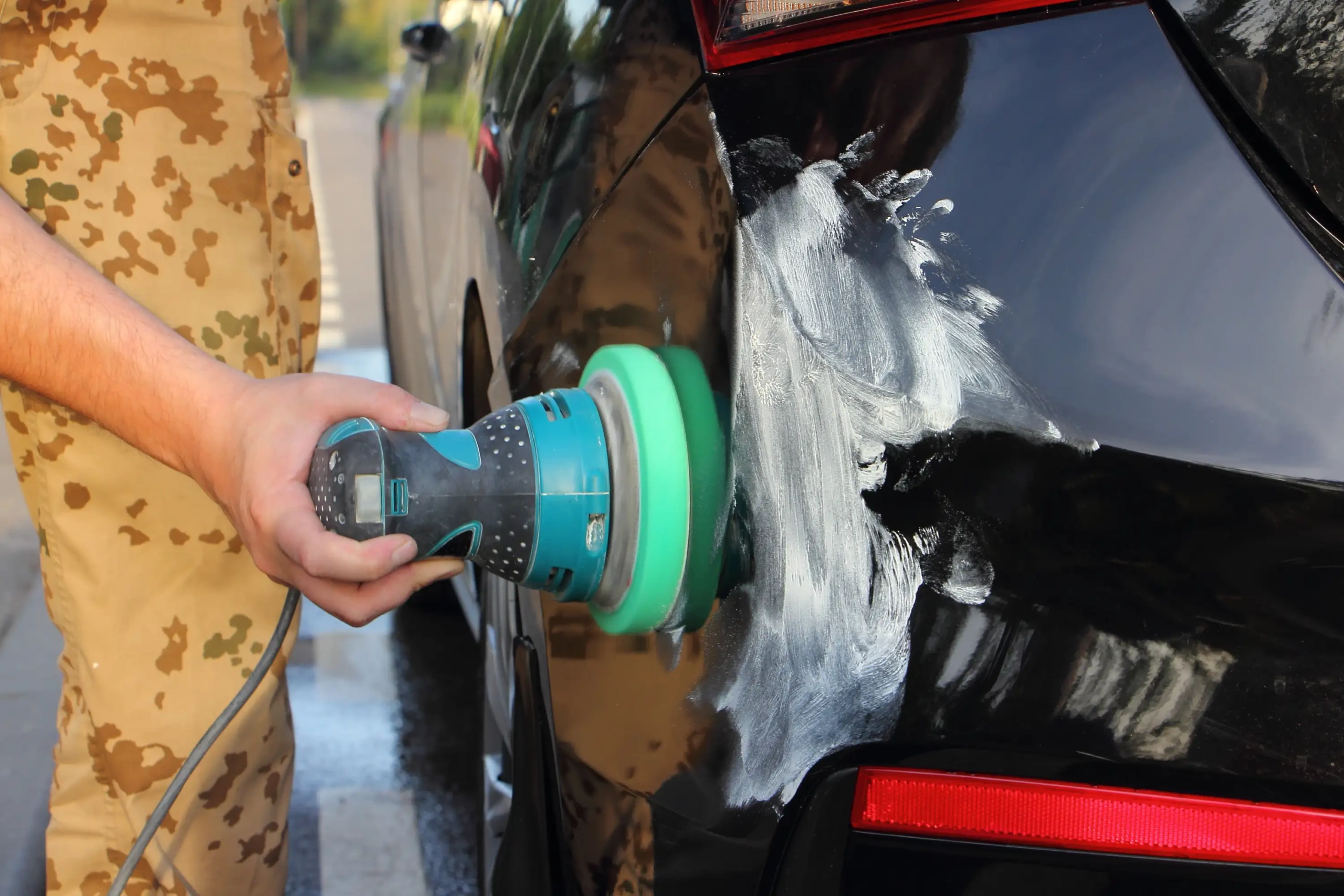
Best Car Buffer for The Money
The highest-quality car buffers on the market might be the best, but the most popular ones are those that offer great value for the price. Here’s a list of top-rated buffers available at affordable prices, with prices updated as of 2024.
- WEN 10 PM 10-Inch Random Orbital Polisher: Around $60-$80
- Porter-Cable 7424XP Variable Speed Polisher: Around $100-$130
- Griot’s Garage 6″ Random Orbital Polisher: Around $140-$160
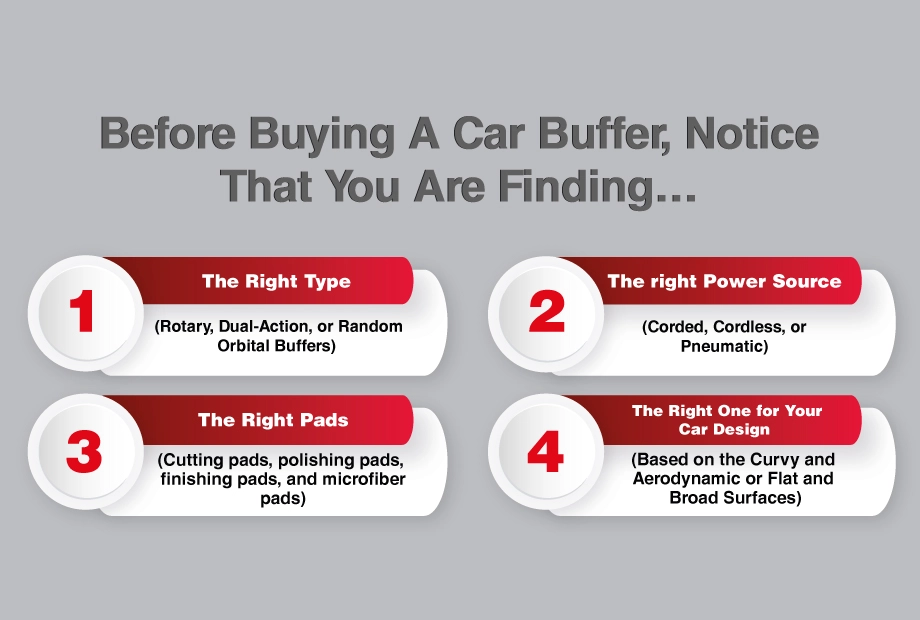
FAQ
What is the best car buffer to buy?
The best car buffer to buy offers variable speed settings, ease of use, and effective performance for both removing swirls and paint imperfections, all at a reasonable price.
What is the best car wax buffer?
The best car wax buffer features adjustable speed settings, an ergonomic design, and a dual-action mechanism for smooth application and effective wax removal.

Ronix
27 July 2024
